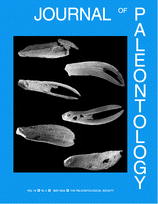The Pacific Slope of North America's paleontologic record of Paosia, a nearshore-marine, pseudomelaniid gastropod primarily associated with the Old World Cretaceous Tethyan realm, is established for the first time. Former workers have almost universally referred to this genus by its junior synonym name Trajanella Popovici-Hatzeg, 1899. Six species, including Paosia pentzensis new species, are recognized, and all are from siliciclastic facies. Their documentable geologic range is late early Albian to early Campanian. Four of the five previously named species were misallocated to genus Acteonina and one was placed in genus “Trajanella.”
Paosia originated in western Europe and in the Caucasus Mountains region during the latest Jurassic (Tithonian). It arrived in the study area, possibly in the Aptian, but certainly by the late early Albian and, most likely, by way of Japan and the north Pacific gyre. Worldwide, the genus had its peak diversity during the Albian and Cenomanian. The only other Western Hemisphere records of Paosia are a species from the Campanian of Jamaica and a possible species from the Coniacian of Texas. Paosia had a preference for tropical waters, but its presence in the study area indicates that it could live in temperate-tropical transition areas.
Most of the Pacific Slope of North America species are represented by a few specimens, but when plentiful, they display variability in overall shape between juvenile and adults, with the last whorl of the adults becoming more cylindrical with growth.
Paosia kollmannii new name is proposed for the homonym Trajanella acuminata Kollmann, 1979.





